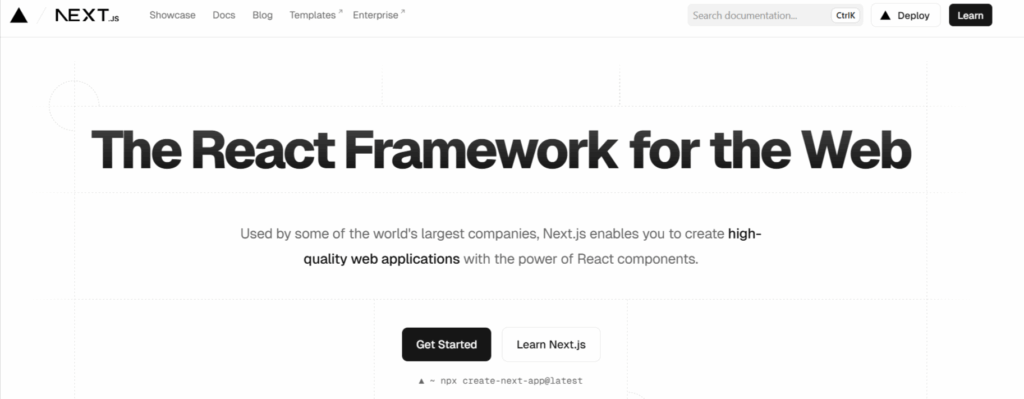
How JavaScript Impacts Page Indexing — and Effective Steps You Can Take
- accuindexcheck
- 0
- Posted on
JavaScript is a fundamental component of most websites today-it is behind things like sliders and dynamic content loading. While from a user’s perspective, it sounds great, it is somewhat confusing from the perspective of a search engine. If your scripts do not render well for Googlebot, content important to you will just slip under the radar, and that page might never be indexed properly.
For a site owner and SEO, this poses a serious concern. A fancy-looking page is of no use if it does not appear in search results. Here, we break down how JavaScript affects indexing, alongside actionable steps to rectify visibility issues and keep your content SEO-compliant.
What Is JavaScript Rendering and Why It Matters for SEO
Have you ever visited a website and for the first second or two, all you saw was a blank screen or a loading spinner-and then suddenly the entire content appears on your screen?-That is because the website is JavaScript-rendered. So, rather than rendering the page upon request with plain-vanilla HTML, JavaScript fetches or builds the content after the initial page load with the request of the user. This is frequently seen in contemporary web apps developed using frameworks like React, Angular, or Vue.
When a crawler for search engines like Google crawls for sites, it finds a way of reading the content like an average user. Imagine your content getting loaded with JavaScript, and the script never runs successfully or takes so long to show it: then the crawler will never record seeing that content; glancing on an absolute-empty page, the crawler moves on.
Client-side vs Server-side Rendering: What’s the Difference?
Client-side rendering (CSR):
- Content is loaded in a browser using JavaScript.
- On first crawling, search engines may get a blank page.
- From an SEO perspective, JavaScript execution is crucial; if it fails, the page is not indexed well.
Server-side rendering (SSR):
- Content gets pre-loaded in the server and then sent as HTML.
- Bots and users could see the full page in a flash.
- Much more reliable for fast indexing in its entirety.
How Search Engines Handle JavaScript Content
If anything, Google sees JavaScript different from HTML. Here’s the deal:
- Crawling – The page is found by Googlebot.
- Rendering – It renders a page from JavaScript, thus “seeing” the content.
- Indexing – It decides whether to include the content in the search results.
But here’s a catch:
- JS pages enter into the rendering queue, which could further delay indexing.
- If your scripts are broken, blocked, or somehow too complex, no one will ever see your content!
JavaScript vs HTML: Which Is More Index-Friendly?
| Feature | HTML | JavaScript |
|---|---|---|
| Speed to Crawl | Instant | Delayed (queued) |
| Readability | Easily visible content | May require rendering |
| SEO Risk Level | Low | Medium to High |
How Googlebot Renders JavaScript

JavaScript is a foreign language for Googlebot. Knowing in detail how Googlebot crawls, renders, and indexes the JavaScript content will scaffold you to see the site indexed and well ranked.
Google Uses a Three-Phase Process to Handle JavaScript
Googlebot processes JavaScript into three major stages: crawling, rendering, and indexing. In the crawling phase, it retrieves the raw HTML and schedules associated resources—like scripts and stylesheets—for processing. During the rendering stage, it runs JavaScript to get the final page. And only after rendering can Google index the actual content. This three-phase process is crucial but may add a delay for JavaScript-based sites as the rendering is not instant like static HTML.
JavaScript Has Common SEO Limitations
Google has certainly come a long way in understanding JavaScript, but the scenario is far from perfect. JavaScript content faces defective indexing that is largely delayed whenever the scripts are heavy and slow or are restricted with robots.txt. Google, when arriving on a page, may not wait much longer for the scripts to execute or for content to be rendered, thereby resulting in partial or no content being indexed. Such content that entirely relies on JavaScript to appear stands a risk of never appearing in search results.
Rendering Queue Causes Time Lag
Upon detection of JavaScript, Googlebot puts the page in a rendering queue rather than processing it right away. This was done due to the management of server resources, especially in cases involving a large number of sites with dynamic content. It is almost like having a “waiting line,” until WRS executes the scripts and completes the full-page view rendering. In some cases, such delays can cause the page to wait in the queue for hours to a couple days before full indexing of the content occurs, depending on some factors like site authority and complexity.
How to know JavaScript Is Affecting Your Indexing
Not sure if JavaScript is interfering with your SEO? There are a few signs that can help you identify issues before they hurt your rankings.
- Pages Not Appearing in Search Results : If your content isn’t showing up on Google—even though it’s live and published—it could be because JavaScript is blocking it from being crawled or rendered. Search engines may not “see” the content at all.
- Crawl Stats Anomalies : A sudden drop in crawled pages or spikes in crawl delays (visible in Google Search Console) may indicate Googlebot is struggling with JavaScript-heavy content.
- Content Missing in the Cached Version of Google: Think about checking the cached version of the page. If some of the important aspects of the website were missing, such as product listings, blog contents, images, or anything important, that means a strong signal that content rendered with JavaScript is not getting indexed.
Common Mistakes to Avoid in JavaScript SEO
JavaScript truly makes for an excellent user experience, but if not properly used, can be horrible for SEO. Stay on your toes so you can avoid these pitfalls that hamper proper content indexing or discoverability.
1. Content Hidden Behind User Actions (e.g., Clicks)
Client-side behavior can sometimes keep content hidden until a user interacts, such as clicking a button or switching tabs. Thus, Googlebot may not view it. Search engines may not always interact with your sites as a real user would. Either keep your important content visible or rendered without any user interaction.
2. Infinite Scroll Issues
Infinite Scrolling Pages can pose problems in case URLs do not change or whenever the content is uploaded in a non-crawlable fashion. In case of endless loading, Googlebot cannot access the deeper content; it simply refuses to index it. Consider applying pagination or load-on-scroll alongside proper URL handling.
3. Relying Too Much on JavaScript for Essential Content
If your primary content (like headings, product descriptions, or blog text) gets loaded via JavaScript, you’re setting yourself up for poor indexing. Make sure important elements are available in HTML or have a server-side version.
4. Overuse of Client-Side Rendering Without Fallbacks
With client-side rendering, the browser — and even Googlebot — is responsible for processing and displaying the content. But if JavaScript fails to load or delays, then your page may seem empty. Ensure you have a fallback strategy like server-side rendering or pre-rendering to support effective crawling.
5. Improperly Handled Navigation Menus
If your main navigation is fully JavaScript, especially using non-standard elements (like
s or custom scripts), search engines might not follow your links-angle. That can break the crawl path for your site and damage its internal linking structure. Always use HTML-based links (<a href=” “) in your menus that are crawlable.
6. Not Testing JavaScript for Search Engines
The biggest SEO mistake is assuming that if something looks fine for users, then it is fine for Google as well. Unfortunately, that is not always the right thing to say. JavaScript content should always be tested using tools such as the URL Inspection Tool, the Mobile-Friendly Test, or Rendering tools to ensure that search engines see everything and index it properly.
How to Fix JavaScript Indexing Issues

If your content is not appearing on Google Search because of JavaScript, don’t panic. Well-tested techniques exist that allow search engines to fully reach and consider JS-powered pages. Here is a breakdown of what you may do:
1. Implement Server-Side Rendering (SSR)
SSR or Server-Side Rendering is how your site content gets rendered; it is done so on the server and then sent to the user’s browser as fully rendered HTML. In client-side rendering (as opposed to SSR), the content is not visible to the user until the browser has run some piece of JavaScript code. To use SSR, everything should be ready at the user’s end or that of Googlebot.
Search engines like Google like content that is instantly visible in the HTML code itself. In client-side rendering, where only JavaScript is used to load the content, the bots may miss out on the content altogether or take too long to render, causing indexing delay or missed content.
2. Use Hydration with SSR
Hydration is the term used when working JavaScript to make interactive static HTML generated by server-side renderer. Basically, the whole page HTML is first sent by the server for SEO purposes; then JavaScript takes charge of interactivity of the page: clicking the buttons, selecting the drop-down options, loading dynamic contents, and so on.
Hydration closes an ever-increasing gap between SEO and the modern JavaScript user experience. SSR alone provides instant content to users and search engines but leaves the page unengaging unless JavaScript takes over. Hydration, however, fills the gap in interactivity with the least loss to SEO benefits.
3. Try Dynamic Rendering (Bot-Specific Rendering)
Dynamic rendering stands as any process by which a server recognizes a bot versus an actual human user. The bot, for example, Googlebot, would get served a full pre-rendered HTML page from your site, while a human user would get the interactivity-JavaScript-powered version.
Dynamic rendering is especially useful for:
- Websites with heavy JavaScript content.
- Pages that change often and need to be indexed quickly.
- Websites where implementing server-side rendering is overly complicated or cost-prohibitive.
Why Dynamic Rendering Imporatnt for SEO
These days, Google indexing so often takes time on JavaScript-heavy sites or even misses content. It could be that bots will not wait for the JavaScript to execute or skip parts of your site. Dynamic rendering ensures that bots get everything they need right away.
4. Use Pre-Rendering Tools

The process implies that pre-rendering techniques allow JavaScript-based pages to be converted into plain static HTML before any bot or human can even visit it, giving direct access to this static version of the page to search engines for easy crawling and indexing.
Here are some popular tools to easily implement pre-rendering:
| Tool | Description |
|---|---|
| Prerender.io | A hosted service that detects bots and serves static HTML. Easy to integrate and requires minimal configuration. Ideal for commercial use. |
| Rendertron | Open-source tool by Google that renders JS pages using headless Chrome and serves static snapshots. Great for custom or budget-sensitive projects. |
| Puppeteer | A powerful Node.js library that lets you control a headless browser to render pages. Highly customizable but requires development effort. |
5. Choose SEO-Friendly Frameworks
Modern frontend frameworks offer Server Side Rendering and pre-rendering support, and a few other SEO amenities, out of the box. It would be best to utilize frameworks where SEO was a first-order concern, instead of applying convoluted workarounds or relying on third-party utilities.
Most regular JavaScript frameworks render content on the client-side, meaning Googlebot has to execute JavaScript to view your real content. This may even delay indexing, if not miss it on occasion.
SEO-friendly frameworks serve fully rendered HTML pages either statically or on the server, reserving everything Google requires upfront.
Some most reliable and seo-friendly frameworks to consider:

| Framework | Based On | Key SEO Features | Ideal For |
|---|---|---|---|
| Next.js | React | SSR, Static Generation, API routes, routing | Enterprise apps, blogs, landing pages |
| Nuxt.js | Vue | SSR, Static Site Generation, file-based routing | Vue lovers, eCommerce, multilingual sites |
| SvelteKit | Svelte | SSR, hydration, fast performance | Lightweight apps, fast-loading sites |
Best Practices to Make JavaScript SEO-Friendly Content
Interactivity is increased by the usage of JavaScript, yet it may negatively affect SEO if not well implemented. One must follow some best practices that have been tried and tested to achieve a balance between functionality and optimal search engine visibility.
1. Keep Critical Content Visible in HTML
Being a general rule to work with JavaScript SEO, all essential content such as headings, descriptions, and key body text should be generated within the first HTML. Anything not present before JavaScript execution might be missed by Googlebot and therefore will not be indexed.
In order to have fully formed HTML delivered to search bots for better crawlability and visibility, SSR or pre-rendering tools are suggested.
2. Use Progressive Enhancement
A basic webpage is created with fundamental functionality even without JavaScript; this constitutes progressive enhancement. Users and bots may interact with the content or understand the page should JavaScript fail or be disabled.
After setting up your basic HTML and CSS, you can then add JavaScript to provide an enhanced and interactive experience, so long as it’s accessible and good for SEO.
3. Load Scripts Efficiently
| Script Attribute | Purpose | SEO Benefit |
|---|---|---|
async | Loads JS independently of HTML parsing | Faster perceived load times |
defer | Executes JS after HTML is parsed | Avoids render-blocking issues |
4. Avoid Blocking JS and CSS in robots.txt
While rendering your web pages, Googlebot must be able to access your JavaScript and CSS files. If those resources are blocked through your robots.txt, then the crawler may have one-half of the understanding about your page layout and functionality.
Verify that your robots.txt file does not exclude directories such as /js/, /css/, or framework-specific resources.
Tools to Audit JavaScript and Indexing
Ensure the checking of the three life killers for your JavaScript-driven pages: crawling, rendering, and indexing, by the search engine:
- Google Search Console: URL Inspection Tools show how exactly Googlebot has viewed a certain page, while the Coverage Report points out indexing errors, many of which arise from JavaScript issues.
- Screaming Frog (JavaScript Rendering Mode): Screaming Frog can explore your website having rendered JavaScript.
- Chrome DevTools & Lighthouse : Use Lighthouse audits via Chrome DevTools to assess SEO readiness, JavaScript performance, and how quickly content becomes visible.
- Accu Index Check : Accu Index Check helps you verify if your key pages are indexed properly, especially those heavily reliant on JavaScript. It’s great for identifying pages that may have rendering issues.
- Sitebulb & DeepCrawl : These tools provide comprehensive reports on site structure, JS rendering status, and crawlability to help spot hidden issues.
FAQs
Does JavaScript work for SEO?
Yes, JavaScript can work for SEO if implemented correctly. However, it can cause indexing or rendering issues if search engines can’t access or process the content. Using proper techniques like server-side rendering helps avoid problems.
Will Google index and rank JavaScript content added to a page?
Google can index JavaScript content, but it’s not always guaranteed. If the JS content loads slowly or requires user interaction, it may be skipped. Pre-rendering or SSR helps ensure better indexing.
Will Googlebot follow JavaScript rendered links?
Googlebot can follow JavaScript-rendered links, but only if they’re crawlable and not hidden behind user actions (like clicks). Use standard anchor tags (<a>) with valid href attributes for best results.
How can the use of JavaScript frameworks impact SEO particularly in terms of content indexing?
Frameworks that rely heavily on client-side rendering can delay or block content from being indexed. Choosing SEO-friendly frameworks like Next.js or Nuxt.js with SSR improves visibility and crawlability.
Is JavaScript SEO friendly?
JavaScript can be SEO friendly, but only with proper implementation. Techniques like SSR, dynamic rendering, and hydration help make JS-powered sites accessible to search engines.
What is the most SEO friendly JavaScript framework?
Next.js (React-based) is widely considered the most SEO-friendly JavaScript framework. It supports SSR and static site generation out of the box. Nuxt.js (Vue-based) and SvelteKit are also strong options.
In conclusion
JavaScript can unlock powerful user experiences, but if not optimized for SEO, it can also block search engines from accessing your content. The key is to balance interactivity with crawlability. By implementing server-side rendering, using SEO-friendly frameworks, pre-rendering critical pages, and following best practices, you ensure that both users and search engines can fully engage with your site. With the right setup, JavaScript doesn’t have to be an obstacle—it can be an asset for your SEO success.